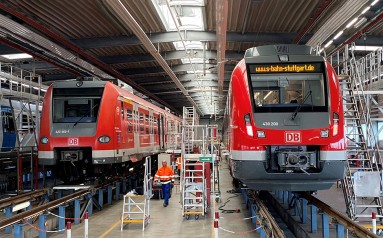Page content
Stuttgart: Revolutionizing rail transport

Stuttgart revolutionizing rail transport
While the automation of rail transport is already ongoing in many countries, the conversion of Stuttgart's rail transport system, the so-called “Digital Knot” major project, is a prime example of how automatic train operation (ATO) can revolutionize rail transport in Germany. The project, which is based on the first fully integrated implementation of ETCS (European Train Control System) hardware for commercial operation in regional transport in Germany, is being carried out by Alstom. The company is equipping 333 regional and suburban trains with state-of-the-art signaling technology. These trains will be put into operation by 2025. A key component of the initiative is Alstom's fully digital third generation on-board platform, which offers increased capacity for ETCS and ATO, cyber security and state-of-the-art maintenance features, and is ready to support future developments such as the Future Railway Mobile Communication System (FRMCS).
97 percent fewer trackside control centers in Belgium
Another key element of digitized railroads are digital interlockings, which control rail traffic by connecting trackside elements such as point machines and signals to central computer units. It simplifies cabling, speeds up response times and increases control distances so that rail traffic can be controlled centrally. Alstom has helped Belgium reduce the number of line control centers by 97 percent through the introduction of digital interlockings. Digital interlockings and radio block control centers make cross-border connections safer, as commands can be transmitted from the operations control center to the vehicles by radio. Modern sensor technology detects track signals or anomalies, which reduces the number of different train control systems and improves the standardization of cross-border connections. The interaction of all components ensures greater sustainability, shorter journey times, tighter train sequences and greater stability of the overall system. As a result, passengers will enjoy more frequent and reliable connections as rail traffic will run more smoothly.
Alstom Hall 3.2 | 450 and outdoor area

